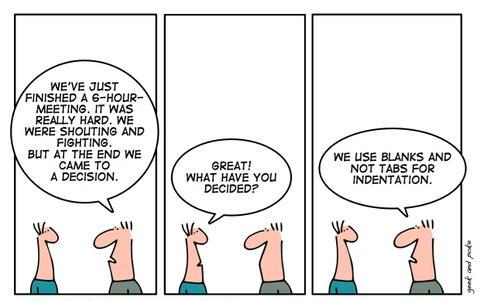
It’s likely that everyone has been part of a meeting where practically nothing gets resolved. If you make big decisions for a company, that shouldn’t be the norm.
It’s important to find ways to get your meetings back to how they’re supposed to be—productive and informative.
Here are just a few ways you can get back on track with your meetings.
Create an Agenda
It’s important that you write down a clear, solid agenda before your meeting. It’s far too easy to go in with a broad idea of what you want to accomplish and then end up getting off track or circling around the same ideas for far too long. The meeting will end and you’ll realize “Wait, what did we actually decide on?”
“It is no question that every productive meeting absolutely needs a solid agenda ahead of time. Everyone attending needs to know that the meeting has a purpose and, to keep it productive, the meeting needs to stick to that purpose—get rid of the chance for stray topics to get you off track.” – Cameron Herold
Start your meeting with a clear purpose that’s also been written down in the agenda for extra measures. You should also create a bulleted list of action items when you send the agenda to your team. They need to be clear on what is being accomplished by this meeting, too.
Invite People Who NEED to Attend
It’s easy to invite more people than you need to a meeting “just in case.” Don’t do that. Think about who you’re inviting and if they really need to be there. With people attending that aren’t vital, you’ll find it’s a lot easier to lose track of what needs to be done.
“Google caps attendees at 10 and Amazon has a “two pizza” rule (i.e., never have a meeting where you can’t feed the whole group with two pies). It all serves one purpose: only invite essential personnel, and you’ll find things stay on track.” – Forbes
By inviting people that aren’t essential, not only are you risking the meeting’s productivity but you’re also just wasting that employee’s time. Everyone attending the meeting should have a specific purpose if you want to get your meetings back on track.
Be a Leader with Purpose
Getting meetings on track and keeping them on track requires a strong leader. As a leader, you need to lead every meeting with purpose and confidence. Just being confident about what needs to get done does increase the chances of it actually getting done.
“Great meetings happen when you have great leaders. It’s not always easy to be the one ensuring things are moving along, but someone has to be accountable for running meetings that don’t suck.” – Forbes
As the leader, you set the tone for the meeting. It is ultimately up to your skills and leadership abilities as to if things are going to get done or not.
The leader is required to keep things on track, even when conversations are starting to stray. You want to be liked by your employees and coworkers and that sometimes means being tempted to join them in straying from the topic of the meeting. It’s up to you to be the one who steers the conversation back, even if that means being the bad guy.
If you have questions or would like more information, I’d be happy to help. Please send an email, and my team will get in touch with you!
Editor’s Note: This post was originally published in December 2009 and had been edited for accuracy and comprehensiveness.




